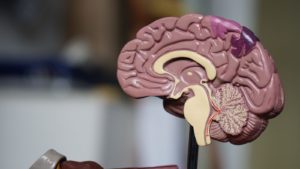The Ultimate Guide to Dietary Fat Recommendations: What You Need to Know by Georgi Dinkov.
Are you confused about the role of dietary fat in your health? With so much conflicting information out there, it’s easy to feel lost.
Fat is an essential nutrient in our diets, providing energy and aiding in the absorption of important vitamins. However, not all fats are created equal, and it can be difficult to know which types to include in our diets.
In this ultimate guide to dietary fat recommendations, we will break down the different types of fats, their functions in the body, and how much of each type we should aim to consume. By the end of this article, you’ll have a better understanding of how to make informed choices about the types of fats you include in your diet for optimal health.
Consuming Dietary Fats Or Not Consuming
Georgi Dinkov discusses some of the health hazards associated with consuming excessive amounts of linoleic acids (LA), and how to avoid them.
Both Georgi and myself believe that too much LA intake is one of our biggest contributors to chronic and degenerative diseases and death. It’s the primary cause behind why highly refined and packaged products are so damaging to our bodies.
It seems that the historical incidence curves for cancer, CVD, diabetes, and neurodegenerative diseases in the general population match up pretty well with the increasing rates of polyunsaturated fatty acid (PUFA) consumption in Western societies, suggesting that PUFAs may be one of the factors leading to these conditions.
How I Became a Biohacker
Despite his background in programming, Georgi has become known as an expert biohacking guru. He graduated from college in 2002 and got a job as a software developer at the National Biomedical Resource Foundation (NBRF) where he worked until 2005.
There, he developed uniprot.org which is a comprehensive online resource for proteins.
Surrounded by up-to-60 of the smartest people in the world, Georgios studied biophysics at university on the sidelines, and became interested in biology, chemistry, and medicine. He now works for Google’s Life Sciences team where he helps develop new ways to use technology to improve healthcare.
“I attended some of their courses at nearby university” he says. “They were teaching at nearby university”.
At first, I thought they were just making fun of me because I was a young, unattached man who had nothing better to do than sit at his computer all day long. However, after a few months, I realized that they weren’t kidding when they told me that I needed to start doing things differently.
Around 2009, I decided to become a low-carb eater. The reason I chose to get involved in this area was because around 2011, I started to read.
As an athlete in high school, I basically combined a very low carbohydrate diet with very intense training. I ended up getting some strange neurological issues and migraines.
Low-Carb Considerations
We dispel some common misconceptions about low-carbing, including why it may be better than a high-fat diet, and why it isn’t ideal if you’re trying to lose weight permanently.
Because of the potential risks associated with chronic low-carb diets, they should be used sparingly. The main reason why these diets may cause health problems is due to their effect on insulin sensitivity.
- Elevated lipolysis in a keto state causes chronically elevated levels of polyunsaturated fatty acids in circulation, with the ensuing inflammatory and hormonal effects.
- When following a low-carb diet, the body may decrease its production of thyroid hormone.
Once your sugar stores are depleted, you tap into your stored fats by breaking down them using a metabolic pathway known as lipolyis. This freed fatty acids are then circulated around your system and used as energy to replace the lack of available sugars.
However, some types of fat block the effect of insulin in your body. So, if you’re an endurance athlete, your body may use your stored fat instead of carbohydrates as its main source of energy during exercise. As a result, your body could produce high levels of glucose, which causes your body to release insulin into your bloodstream.
Insulin then transports the glucose from your liver to your muscles and tissues where it gets used as energy. But when there isn’t enough glucose available, the insulin triggers your pancreas to start producing more. Eventually, the pancreas becomes exhausted and stops making any more insulin. At that point, the glucose builds up in your bloodstream and starts causing damage to your organs.
Glucose production occurs in the body when there is no carbohydrate available for use. When carbohydrates aren’t available, the body produces glucose from protein instead. However, if you don’t eat enough protein, the body turns to fat stores for energy.
Only about 10% of the blood sugar (glucagon) in type 2 diabetics comes from dietary sources; the rest comes from chronically high levels of gluconeogenesis. Cortisol appears to be driving both gluconeogenesis and hyperglycemia in type 2 diabeties. Exercising excessively may actually worsen insulin resistance.
People who have Cushing syndrome have the same central body fat accumulation and reduced muscle mass (sarcopaenia) as people with type 2 diabetics. However, by inhibiting cortisol’s effects with drugs, one can achieve sustained weight reduction without dieting, and improve insulin sensitivity.
If you’re exercising for an extended period of time without any carbohydrates available, your body will start producing too much stress hormone (cortisone) which will cause muscle cramps, fatigue, brain fog, etc.


Dietary Fats and Fatty Liver Disease
In his search for solutions to the problems he experienced on a low carb lifestyle, he stumbled upon Dr. Peat’s website, 6 (aka Dr. T. A. Peterson), an American biologist who’s been researching the role of energy in cells, and the effect of Lactic Acid. Georgi read Peat’s work in 2009, and ultimately began experimenting himself.
According to Georgi, published research demonstrates that LA is not a benign macronutient. Instead, it’s an inflammatory mediator and has endocrinological effects that resemble estrogens. Furthermore, contrary to popular belief, LA plays a role in NAFLD more so than sugar and other carbohydrates.9
Georgi cites research 9, 10, 11 showing people with alcoholic cirrhois (livers diseases) who eat their normal diets, which were high in omega 6 fats, experience classic progression of cirrhosis making them die of cirrhos events including cirrhotic bleeding, ascites, jaundice, hepatic encephalopathy, varices, hepatorenal syndrome, and portal hypertension.
The group whose diets were altered to eliminate all forms of fat aside from coconut saturated fats were able to reverse their cirrhoses even in the presence of continuing alcoholism. Additional animal experiments 12 confirm these results.
As explained by Georgie:
“People who eat too much omega-6 fatty acid develop liver disease because their lysosomes become enlarged and filled with OxLAMs.” Meanwhile, the lysosomes of alcoholics don’t swell up and fill with OxLAMs, and they’re not obese.”
Georgie
When you eat a high-carbohydrate/low-protein diet, there are many different types of carbohydrates (simple sugars) in the foods you consume, but they can be separated into simple carbohydrates, complex carbohydrates, and dietary fiber.
Saturated fats are burned first by the liver and other tissues, whereas unsaturated fats are primarily deposited into fat cells.
Polyunsaturates, aside from being very prone to spontaneous autoxidation, are precursers to inflammatory mediators such us prostaglandin and leukotriene. Those inflammatory mediators derive from … linoleic acids. If you consume a lot of polyunsaturates, and specifically linolec acid, you’ll have more … systemic inflammations.
Now NAFLD (nonalcoholic fatty liver disease) is already known to be a chronic condition characterized by inflammation. However, it was previously thought that saturated fats were responsible for causing inflammation. In reality, saturated fats do not cause inflammation; they simply go into storage or oxidation if they are not used.
However, polyunsaturated fat is unstable and may be converted into harmful substances when heated. Therefore, the liver being the major organ for detoxifying any substance taken in via the diet will use up most of the polyunsaturated fat.
“Because they’re precursors for a range of different mediators, hormones in the human system will take them, specifically linolenic acid, and then by means of a series of chemical processes turn it into prostaglandin, leukotriene, and thromboxane”
Polyunsaturated Fatty Acids (PUFAs) are Stored
A key takeaway from this study is that omega-6 fats are not digested by the human digestive system and instead they go into storage. Most of the weight gain in obese people is due to the accumulation of these types of fatty acids.
Saturated fats aren’t bad for you at all. They actually help keep you healthy by keeping your blood cholesterol levels low. However, animal studies conducted in the 1920s showed that when animals were given large amounts of LA, they got fatter than normal.
This led to the widespread use of omega-3 fatty acids (in particular DHA) for human consumption because the goal there was to increase caloric efficiency by maximizing the weight gain of the humans consuming them.
It shouldn’t surprise anyone that we continue to get fatter while eating more and more omega-6 fats.
The half-life for PUFAs such as LNA (linolenic acid) is about 679 days, meaning that to rid your body completely of them would require approximately six years, but if you were to keep loading up on them, then they’d just accumulate in your cells and prevent your mitochondria and cellular machineries from functioning properly.
Research has shown that if you give people enough omega 3 fatty acids, their bodies will start dying off.
PUFAs Coming Out of Storage Can Cause Trouble
One way to eventually lower your blood levels of LA is to keep them low by keeping your total LA intake below two percent (maybe even closer to one). You should exercise and fast to drive the LA out, however, you must be extremely cautious when dealing with high LA stores.
Even though most marathon runners are not obese, some of them develop kidney failure during their races. The question is, why is this happening? It appears that the circulating fatty acids, which come from fat stores, circulate and cause energy issues.
The liver converts fats into glycerol and fatty acid conjugates (glucuronides). These fatty acid conjugates then pass out of the body via urine.
They may cause kidney stones when taken in large quantities. However, they may be safe when taken in small amounts.
So, what should I do? Well, it appears that we should be avoiding getting too much lipolysis. What does lipolysis mean? It means that you’ve used up your glycogens and the body is saying, “I’m missing my energy source.” Because you aren’t consuming food, and you’ve depleted your glycogens, the body is telling you, “I can’t provide you with enough energy.”
“So fat is your only other source of energy besides carbohydrates. Plus the amino acids that come from your body’s production of stress hormones (cortisone). So, if you’re not eating enough calories, you shouldn’t be going into starvation mode for too long. If you do go into starvation mode for too much time, then you run the risk of increasing your basal metabolic rate and burning off muscle mass. And if you’re not eating any carbs at all, then you’re just relying on fat metabolism, which isn’t good either.”
Protandim:
Nrf2 Synergizer
Protandim® Nrf2 Synergizer®, is a breakthrough nutritional supplement that boosts your body’s own ability to produce powerful antioxidants.
Dietary Fat Recommendations for TRE Have Changed
Georgi has pointed out the dangers of a restrictive fast. For instance, if you eat only once per day, then you might not be able to purge enough fat from your body. He suggests starting off by having two meals per day instead of just one, so you don’t feel deprived.
It seems that most people who practice intermittent fasting (or eat within a 6–8 hour window) are doing so because they’re either already metabolically flexible or because they’re trying to lose weight.
Once you’ve lost your metabolic flexibility, this strategy becomes counterproductive because it increases your cortisol levels, which cause chronic inflammation that can result in tissue damage. It usually takes 3–6 months before you’re able to regain your metabolic flexibility.
Before my meeting with Georgi, I ate between six and eight hours per meal, which was fine for a while, but now I’m shifting to one long eating window of 12 hours, followed by three shorter eating sessions of 10 hours each. If you’re healthy, I’d recommend avoiding very short eating sessions under eight hours.
Because chronic fasting also raises your cortisol levels, just like chronic endurance training does. High levels of cortisol cause inflammation and promote the synthesis of fat, which leads to obesity. Furthermore, high levels of LA can damage your cells.
“So, you shouldn’t be trying to lose weight by exercising too hard, because you’ll burn out your muscles and your body won’t be able to store any glycogen for future use. And you shouldn’t be stressing your adrenal glands out, because if they get too stimulated, then your body starts shedding fat instead of storing it.”
These days, molecular biology and pH physiology are built upon a pre-1860 scenario where we don’t have these high levels (or any) of L-carnitine acetyltransferase (LAT), which completely distort our understanding of how to optimize for health. If LAT wasn’t there, we could fast to activate autolysis and reap all the benefits.
How we activate your health with coaching a natural approach
Yes, … there is a way to naturally repair your body on a cellular level… through activating your body to do what it is supposed to. This is not supplementation, it’s activation! Start your Activated Living today. The Little Yellow Activator reduces oxidative stress by an average of 40% in 30 days and increases glutathione by approximately 300% in 120 days.* Protandim Nrf2 Synergizer is a daily food supplement that supports cellular health and well-being. To order LifeVantage products, visit our webshop.



